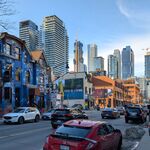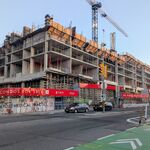Jonny5
Senior Member
This was a huge project. A lot of bridges and infrastructure had to be built or replaced, notably at Bronte and Sixteen Mile Creeks.
Perhaps GO's QEW Express will now actually use a part of the QEW during rush hour.
Commuters set to get a break with HOV lanes on QEW
Perhaps GO's QEW Express will now actually use a part of the QEW during rush hour.
Commuters set to get a break with HOV lanes on QEW
Commuters in Oakville, Burlington and Hamilton should get some relief from traffic congestion on the QEW starting Monday when the province is expected to open new high occupancy vehicle lanes between Trafalgar Rd. and Guelph Line.
The 16-kilometre widening to eight lanes from six, was announced in 2007 and cost about $380 million.
About 175,000 cars travel that section of the QEW every day, according to a spokesperson for Ontario Transportation Minister Kathleen Wynne.
HOV lanes are believed to cut greenhouse gas emissions by encouraging more drivers to carpool since only cars carrying more than one person are permitted to use the new lanes.
About 39 kilometres of HOV lanes have also been operating on Highways 403 and 404 since about 2005, where the government claims they have cut trip times by about 12 minutes on average.
In 2006 Ontario transportation studies showed the average rush-hour speed in HOV lanes on Highway 403 was 100 km/h compared to 60 km/h in general traffic lanes. On Highway 404 southbound, the HOV average was 70 km/h compared to 50 km/h in the other lanes.
Some critics, however, have said HOV lanes are just more room to put cars and transportation experts say police enforcement of the occupancy rules is critical to the success of the carpooling lanes.
The Ontario government plans to add more than 450 kilometres of HOV lanes around Toronto, including the Niagara region and north to Barrie, over the next 25 years.
The QEW lanes are part of the $32 billion Open Ontario infrastructure funds.


















